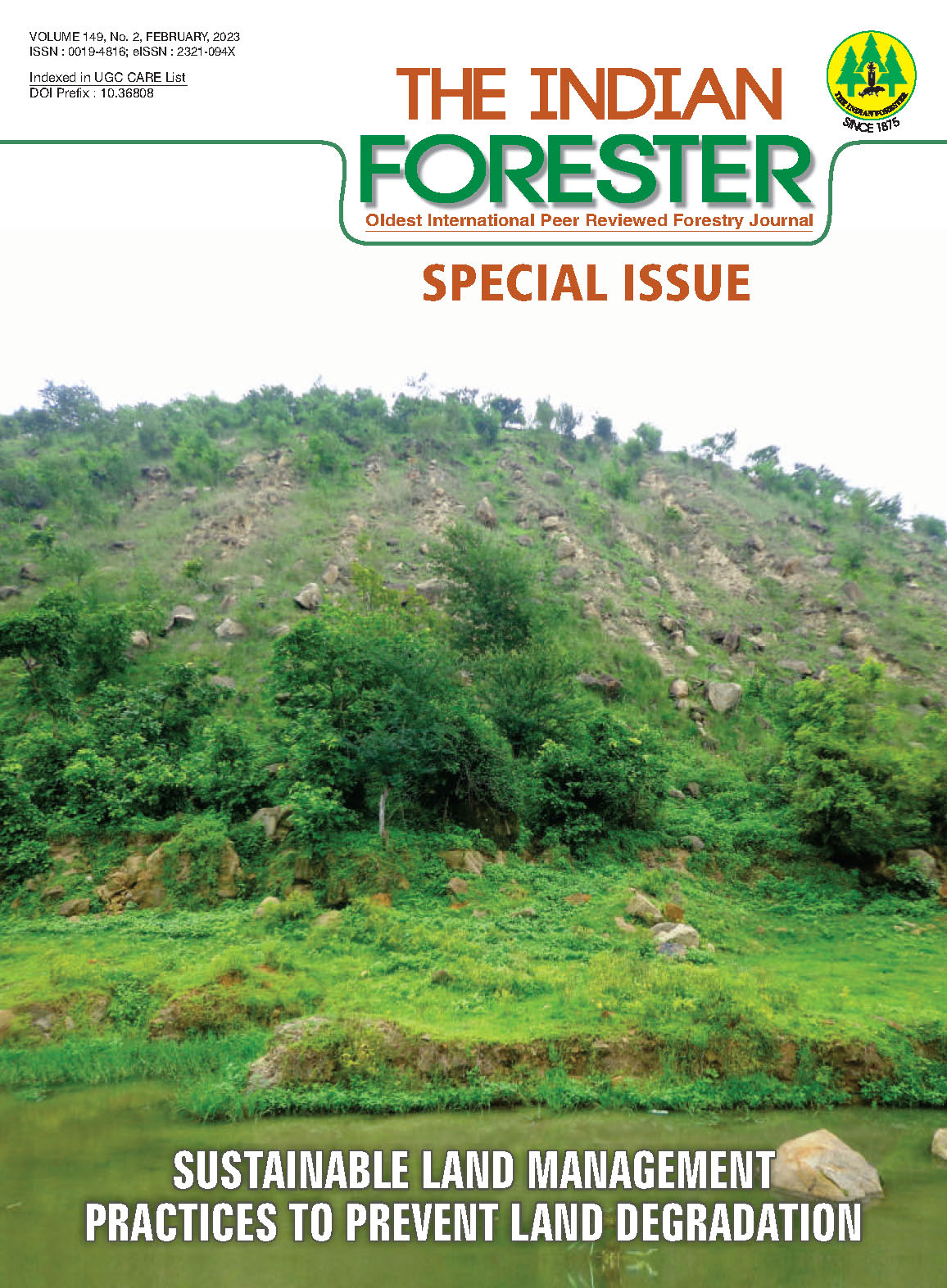Recovery of Ecosystem Functions on a Restored Limestone Mine area in the Foothills of Himalaya
DOI:
https://doi.org/10.36808/if/2023/v149i2/169796Keywords:
Limestone Mine, Restoration, Soil Respiration, Microbial Biomass, Litterfall, Ecosystem Function.Abstract
The study aims at assessing various ecosystem functions of a limestone mine area, restored 30 years back, in comparison to its adjoining natural forest. Both the areas have similar type of species composition. The natural forest is dominated by broadleaf species (Bauhinia semla, Sapium insigne) whereas, the restored area has Boehmeria rugulosa, Cupressus torulosa, Bauhinia semla as the dominant tree species. Though the number of species of various life forms (trees, shrubs, herbs, and grasses) was low in the adjoining natural forest, the estimated total basal cover (TBC) was much higher (2497.65 cm2 /100 m2 ) compared to the restored area (674.64 cm2 /100m2 ). Higher diversity was recorded in the restored mine area which reflects the ability of the systemtoprovide stable forestfunctions, especially intheglobal climate change scenarios. Microbial activity in the top soil layer was found to have increased substantially in the restored mine site.Annual litter production, soilrespiration rate, and soil microbial biomass in the restored mine area were comparable with that of the natural forest. It indicates a significant level of organic matter and detritus availability in the top soils of the restored area since degradable organic carbon present in the soil is the main fuel responsible for the CO2 emission during soil respiration. Though the carbon assimilation rate recorded in the vegetation of the restored area is higher than that of vegetation of natural forest at the species level, at the community level, the restored area may have lower assimilation owing to lower TBC.Downloads
Download data is not yet available.
Downloads
Published
2023-05-04
How to Cite
Bala, N., Panwar, V. P., Nautiyal, S., Kumar, A., Chand, T., & Verma, P. K. (2023). Recovery of Ecosystem Functions on a Restored Limestone Mine area in the Foothills of Himalaya. Indian Forester, 149(2), 207–214. https://doi.org/10.36808/if/2023/v149i2/169796
Issue
Section
Articles
License
Unless otherwise stated, copyright or similar rights in all materials presented on the site, including graphical images, are owned by Indian Forester.





